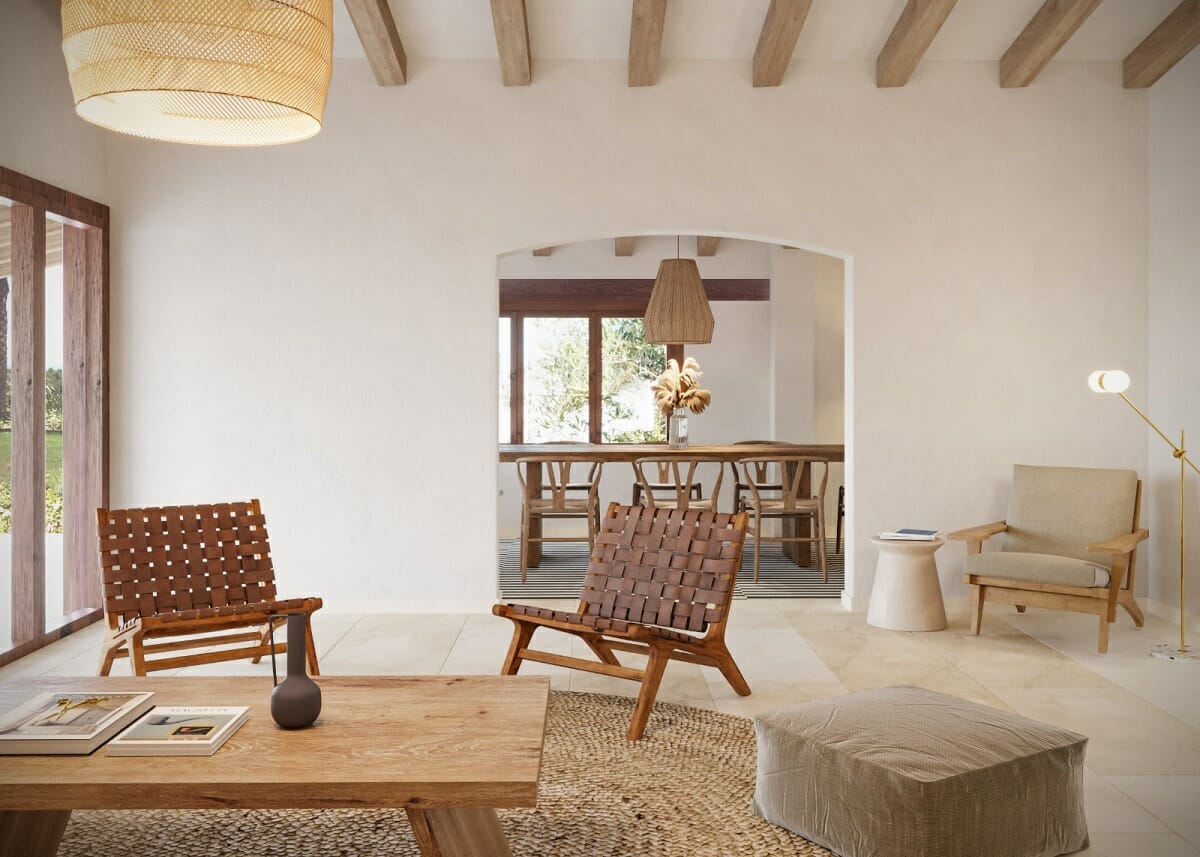As many people were faced with more time at home during the pandemic, they started paying more attention to finding comfort without going anywhere. Remodeling and redecorating projects to give homes a staycation feeling went into overdrive.
Patios and backyards were transformed into outdoor living room oases and extra rooms became home gyms and home offices. Access to nature trumped being close to the city and the idea of home shifted from a place to sleep, to a sanctuary for even the busiest people who weren’t used to spending a lot of time at home. Although mask and vaccination requirements and forced quarantines have mostly ended, the desire for a more pleasant living space is here to stay for many homeowners.
The idea of modifying a home to support the health and well-being of the people who live in it is known by real estate agents, architects, and designers as Wellness Design — and it’s a trend that people are buzzing about. This process of creating and remodeling homes focuses on the well-being of the people who live there, and their guests, just as much as creating aesthetically pleasing environments. Principles such as adding greenery, opening up lighting, paying attention to the source of building materials, and reducing sound, are some of the main goals of this wellness home trend.
For homeowners who have the financial resources, incorporating Wellness Design can inspire a home remodel using green materials and creating open space. However, you don’t have to remodel your home to bring some of these elements into your everyday life. Following three areas of improvement can help you on your way to creating a sanctuary that will benefit the health of everyone who steps into your home. Or, these tips can help make your home more appealing to buyers.
Assess your lighting

source: pinterest.com
Natural light in a home not only creates a pleasant environment, it also helps to regulate circadian rhythms. The health benefits of waking up with daylight and ending the day in darkness include giving your body the cues it needs to sleep and rest. If your home doesn’t already maximize its natural lighting then there are a few simple steps to improve it. Ways to add more light include removing heavy drapes, and even adding a skylight in a hallway, bathroom, or kitchen. Replacing windows or making them larger is a big job but it can also be part of adding light in a home. Trimming trees and bushes that might be blocking sunlight are other ways to maximize natural light without renovating. Light is one of those changes that can add value to your home without a major investment.
While you want to increase light in areas of your home that you use during the day, such as the kitchen, a home office, and living room, you want to minimize light in your bedroom — at least during the evening. Creating a healthy nighttime lighting environment means removing televisions and other blue light sources from sleeping areas, adding light-blocking curtains, and removing reflective surfaces in bedrooms. Bedrooms that are free of clutter and are comfortable — even replacing a mattress for wool or other natural fiber models — will further promote healthy sleep cycles.
Declutter

source: pinterest.com
Removing clutter is not only essential in the bedroom, it can also add a sense of calm to every room of your house. The idea of removing clutter can be overwhelming depending on how much stuff you have. One strategy is to start small, such as with a closet or bathroom and then sort items according to categories. You can then go through and sort by “keep, donate, later, and toss” keeping only those items that are truly essential. “Later” is a necessary category because it will help the process of sorting move more quickly. A home that’s not overloaded with stuff not only gives you more space, decluttering is also good for your health, eliminating the surfaces that can collect dust and germs.
Aside from physical health benefits, decluttering can also help eliminate mind clutter. Another part of Wellness Design is creating “thin places,” which are areas in a home that might create moments for reflection or have minimal distractions. This might look like an extra room that’s a meditation space, or a living room that has minimal decorative touches.
Create connections with nature

source: pinterest.com
Quiet and clean spaces are just one of the ways to create a clear mind. Scientific studies prove that humans need frequent access to nature to thrive. A back garden, front yard, or park down the street is ideal, but even city dwellers can create access to nature by adding indoor plants to every part of their homes.
Homes that consider your well being will naturally be more pleasant environments to spend time in.




